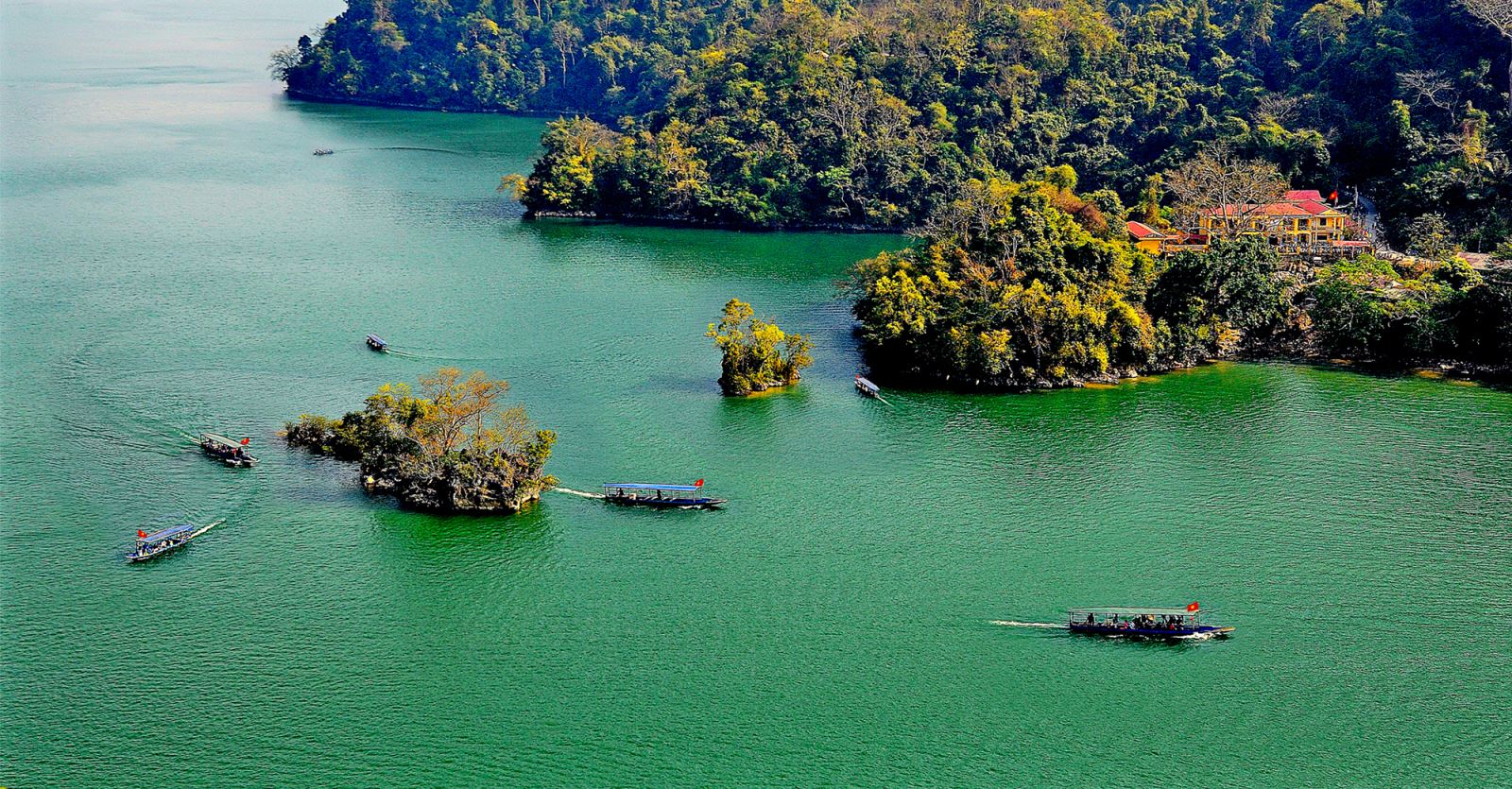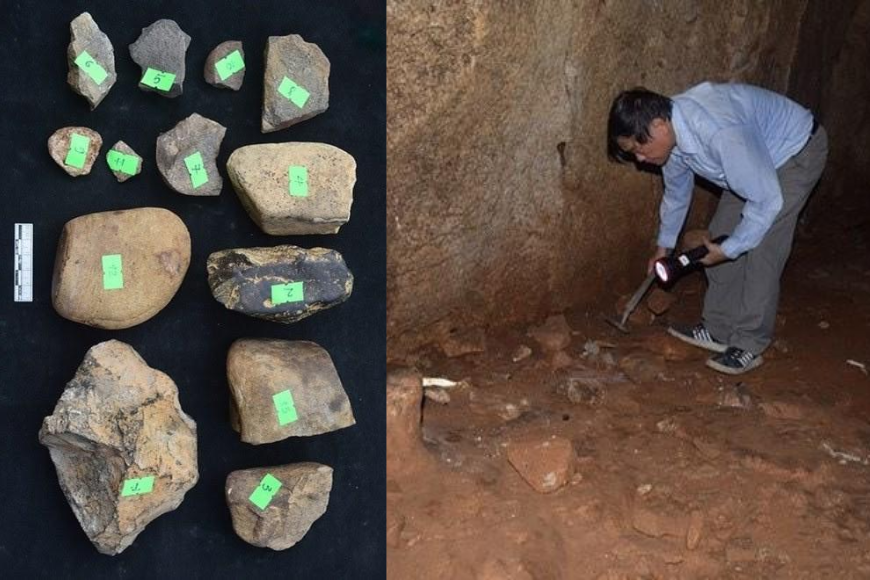Written on July 23, 2020 - Updated May, 2024
In July 2020, archaeologists made a major discovery in the caves of Ba Be National Park, located in northern Vietnam's Bac Kan province. They found objects dating back some 20,000 years, revealing the earliest traces of human occupation in the region.
 Ba Be national park
Ba Be national park is home to a unique ecosystem, with limestone karst mountains typical of northern Vietnam and evergreen forests. In the center is Ba Be Lake, one of the world's largest natural lakes at 178m altitude. It consists of 3 lakes surrounded by karsts with incredible caves carved out by erosion over the years.
In caves such as
Tham Khit,
Tham Mya,
Na Phoong and
Ba Cua, archaeologists have unearthed nearly 100 objects dating from the Mesolithic to the early Bronze Age.

Na Phoong Cave, South of Ba Be National Park
The oldest pieces date back 20,000 years, with stone tools, bones and animal teeth probably used for feeding.
The
Tham Mya cave yielded stone artefacts dating back to the Hoa Binh civilization, which lived in the Mesolithic period between 12,000 and 10,000 BC. The
Na Phoong and
Ba Cua caves revealed ceramics from the early Bronze Age, around 2,000 years BC.

Examples of artefacts found in Tham Khit cave, North of Ba Be National Park